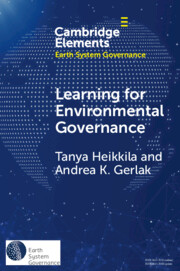Element contents
Learning for Environmental Governance
Published online by Cambridge University Press: 22 April 2024
Summary
Information
- Type
- Element
- Information
- Online ISBN: 9781009461115Publisher: Cambridge University PressPrint publication: 16 May 2024
